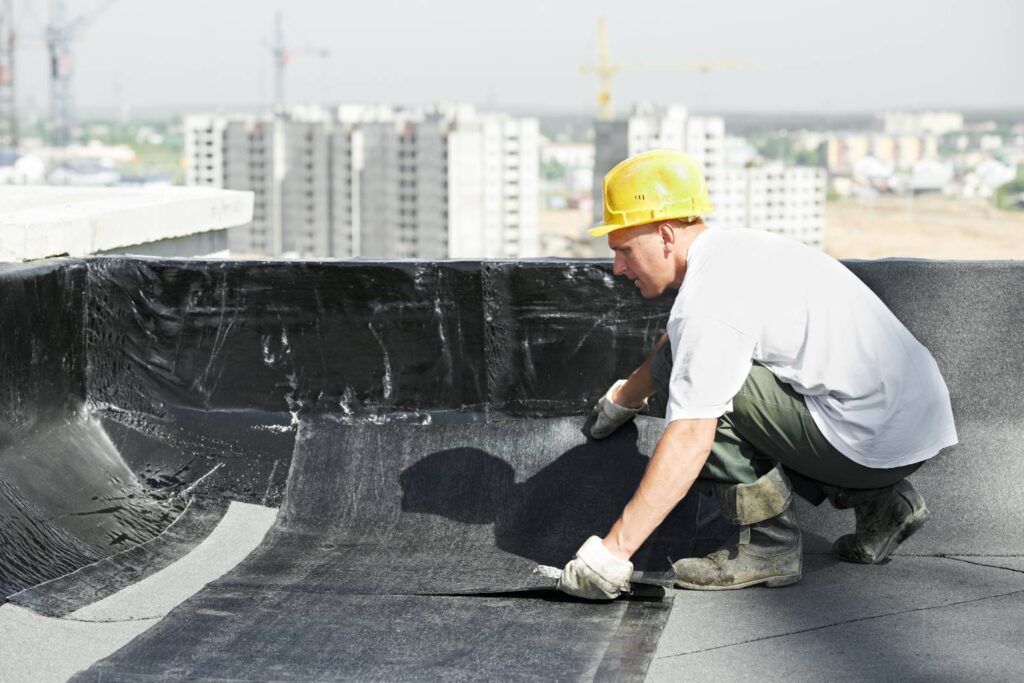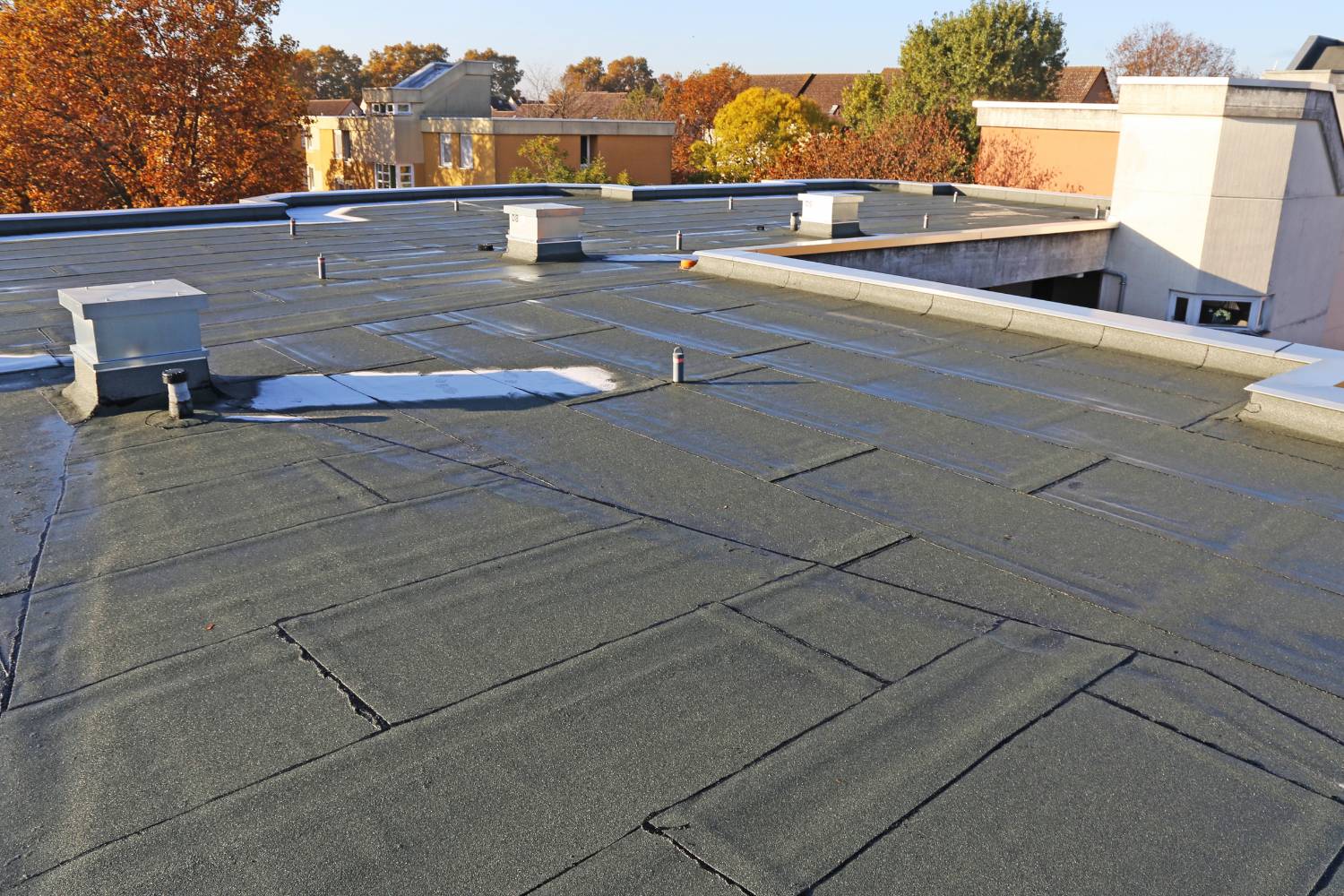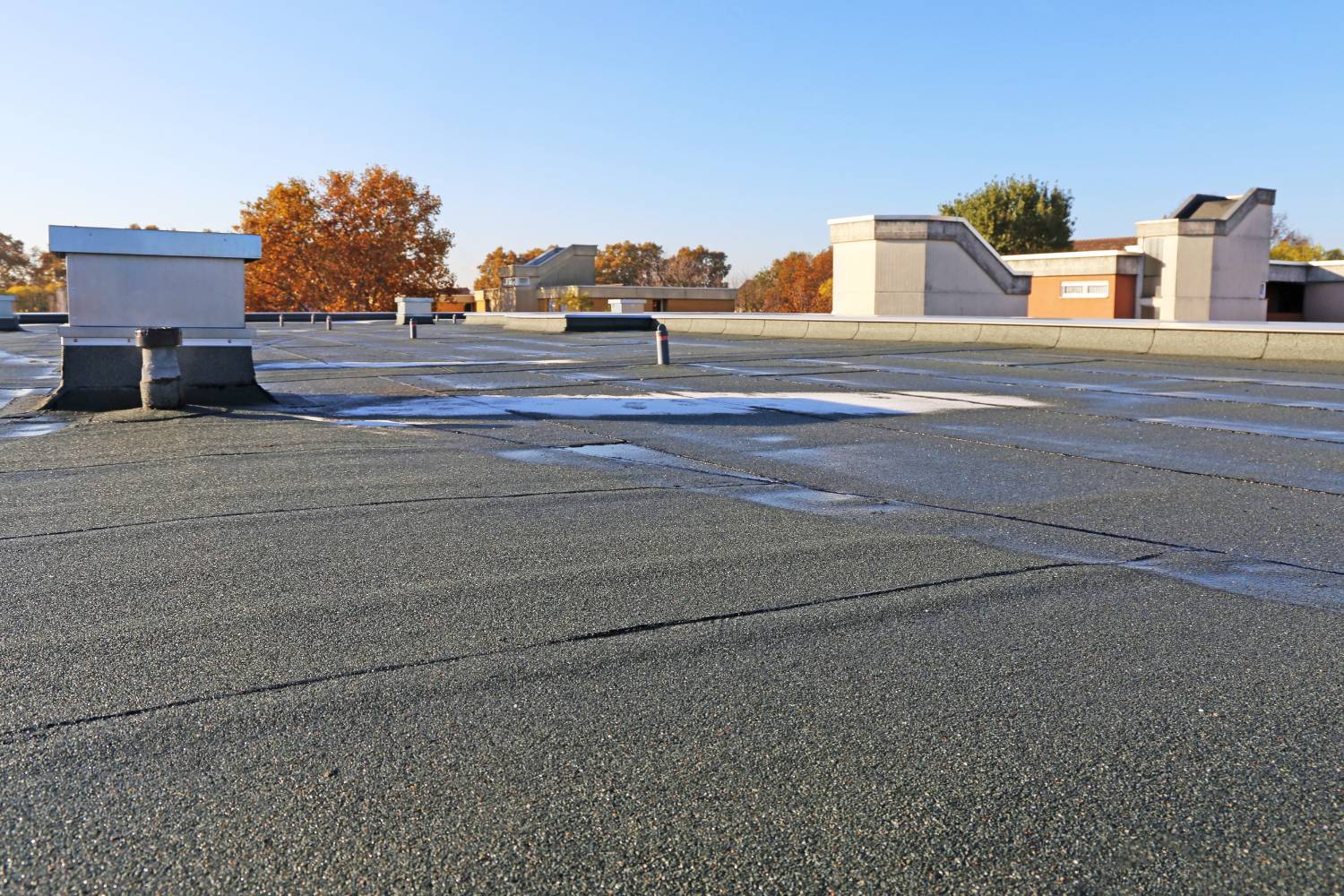When it comes to maintaining a commercial building, one critical aspect that often goes overlooked is the roof. Proper roof maintenance is essential for protecting the structural integrity of your property, ensuring safety, and maximising your investment.
In this blog, we will explore the importance of roof restoration for commercial buildings, the financial benefits, and the significant impact on longevity, performance, energy efficiency, and environmental sustainability.
We will also provide insights into choosing the right roofing material, common challenges in roof restoration, and best practices for maintaining your roof after restoration. Whether you're a seasoned business owner or new to property management, this guide will equip you with the knowledge needed to make informed decisions about your commercial roof.
Why Is Roof Restoration Important For Commercial Buildings?
Financial Benefits
Roof restoration offers significant financial advantages over full roof replacement. It is considerably less expensive, often costing up to three times less per square foot. By addressing issues early through regular maintenance and timely restorations, property owners can avoid costly repairs that arise from minor issues becoming major problems. Additionally, a well-maintained roof enhances the value of commercial properties, making them more attractive to potential buyers or tenants.
Longevity And Performance
One of the key benefits of roof restoration is the extended lifespan it provides. Restorations can prolong the life of a roof by 10 to 15 years, delaying the need for a complete replacement. Moreover, these restorations ensure that roofs continue to perform effectively, protecting the building from leaks and other forms of damage. Regular maintenance and repairs also help maintain the structural integrity of the roof, preventing damage to the roof deck and underlying structures.
Energy Efficiency
Roof restoration plays a crucial role in improving a building's energy efficiency. Proper maintenance and restoration enhance the insulation properties of the roof, leading to consistent indoor temperatures and reduced energy costs. Applying reflective coatings during restorations further reduces heat absorption, which contributes to lower cooling costs in the summer.
Environmental Impact
Restoration generates significantly less waste compared to full roof replacements, which involve tearing off and disposing of old roofing materials. By extending the life of the existing roof, restoration practices contribute to sustainability and reduce the environmental impact associated with manufacturing new roofing materials. This approach not only benefits the environment but also supports sustainable business practices.
Safety And Operational Continuity
Roof restorations are less disruptive than full replacements, allowing businesses to continue operations with minimal interruptions. This is particularly important for maintaining productivity and avoiding downtime. Addressing roof issues promptly through restoration also prevents health hazards like mould growth and structural instability, ensuring a safe environment for building occupants.
Specific Restoration Benefits By Roof Type
Different types of roofs benefit from restoration in specific ways. For metal roofs, restoration addresses issues such as seam laps, rusted spots, and penetrations around screw heads, enhancing protection against wind-driven rain.
Single-ply roofs, including EPDM, TPO, or PVC roofs, benefit from the reinforcement of seams and the repair of tears, cuts, and splits, ensuring durability and leak prevention. Built-up or modified bitumen roofs are restored by handling issues with seams, flashings, and penetrations, preventing leaks and maintaining overall roof integrity.
Proactive Maintenance Plans
Developing a proactive maintenance plan is essential for the longevity of commercial roofs. Conducting semi-annual inspections helps in the early detection of potential issues, allowing for timely repairs. Hiring experienced roofing professionals for these inspections and repairs ensures thorough and effective maintenance. Regular cleaning and the application of protective coatings further enhance roof durability and efficiency, making preventative maintenance a crucial aspect of building management.
How Do You Choose The Right Roofing Material For Commercial Roof Restoration?
Selecting the appropriate roofing material for commercial roof restoration is a critical decision that can significantly impact your building's longevity, energy efficiency, and overall costs. This comprehensive guide provides insights based on information from Superstorm Restoration, Advantage Construction, and Premier Systems Roofing.
Factors To Consider
When choosing roofing materials, consider the type of facility. Different materials are suited for different types of facilities. For instance, a manufacturing facility requires a more robust roofing system compared to a warehouse used solely for storage. Evaluate the current condition of your existing roof, including its type, any noticeable protrusions like HVAC units, vents, or skylights, and any specific features that could affect the installation and maintenance of a new roof.
Climate and environmental conditions play a crucial role in your decision. Take into account local weather patterns, including wind, hail, temperature extremes, and environmental features such as nearby trees. Your budget is another critical factor. Balance the initial installation costs with long-term maintenance and repair costs, as well as the expected lifespan of the roofing material.
Energy efficiency and environmental impact should also be considered. Opt for materials that enhance energy efficiency and possibly qualify for tax incentives. Additionally, think about the future plans for your building. Consider how long you plan to keep the property and whether investing in a longer-lasting material might be more cost-effective in the long run.
Types Of Commercial Roofing Materials
Thermoplastic Polyolefin (TPO) is a cost-effective option with strong seams to prevent leaks, typically lasting 10-20 years. Built-Up Roofing Systems (BUR) offer extra protection through multiple layers and have a lifespan of 15-20 years. Modified Bitumen (MB) is durable and suitable for various temperatures, with a lifespan of about 20 years.
Polyvinyl Chloride (PVC) is UV-resistant and long-lasting but more expensive, with a lifespan exceeding 25 years. Ethylene Propylene Diene Monomer (EPDM) is an affordable, easy-to-install option that lasts 25-30 years. Metal roofing is extremely durable and can last over 50 years, making it great for energy efficiency and withstanding extreme weather.
Spray Foam Roofing is energy-efficient and long-lasting with proper maintenance, potentially lasting over 50 years with regular recoating. Asphalt-based roofing is durable and can last around 50 years with regular maintenance.
Pros And Cons Of Flat Vs. Sloped Roofs
Flat roofs are easier and cheaper to install and allow for additional storage space. However, they have poor drainage, are prone to debris collection, and require more maintenance. On the other hand, sloped roofs provide better drainage and less debris buildup. They are, however, hazardous for maintenance due to their incline and can be more expensive because of the difficulty in installation.
What Are The Common Challenges In Commercial Roof Restoration?
Addressing Standing Water
Standing water is a common issue in commercial roofs, often due to structural problems or faulty drainage systems. If not addressed promptly, standing water can lead to significant water damage and leaks. Experienced roofers can quickly identify the causes of water pooling and implement solutions to ensure proper drainage and prevent further damage.
Membrane Shrinkage Or Expansion
Roofing materials, especially membranes, can shrink or expand due to extreme temperatures and UV exposure. This can cause cracks in the roofing system joints and flashing to pull away from walls, leading to leaks. Addressing this issue often involves removing affected flashing and replacing damaged areas with more resilient materials like EPDM.
Scheduling Around Inclement Weather
Unpredictable weather is a significant obstacle in roof restoration projects. Heavy rain, snow, and extreme heat can disrupt timelines and working conditions. Professional roofing contractors must plan for these contingencies by understanding local weather patterns and incorporating flexibility into their project schedules.
Poorly Installed Flashing
Flashing, which seals openings in the roof, is crucial for preventing leaks. Poorly installed flashing can lead to water ingress and subsequent damage. Ensuring proper flashing installation is essential for maintaining the roof's integrity and preventing water-related issues.
Ponding Water
Water pooling on the roof, often due to uneven surfaces, clogged gutters, or poor drainage from HVAC units, can cause significant problems. Preventing ponding water involves regular maintenance tasks like cleaning gutters and ensuring proper drainage systems are in place.
Roof Punctures
Wind, hail, and heavy foot traffic can cause punctures in the roofing material. Even small punctures can lead to moisture penetration and extensive damage. Regular inspections, especially after severe weather events, can help identify and repair punctures before they cause major issues.
Blistering
Blisters in roofing materials, caused by trapped moisture or air, can expand with temperature changes and lead to significant damage. While minor blistering may not require immediate attention, significant blistering should be addressed to prevent costly repairs.
Lack Of Maintenance
Many commercial roof issues stem from inadequate maintenance. Regular inspections and proactive maintenance can identify small problems before they escalate into major repairs. A proactive maintenance program extends the roof's lifespan and reduces the likelihood of significant damage.
Tree Damage
Overhanging branches can scratch the roof surface, and fallen limbs can cause severe damage during storms. Regularly trimming trees and installing gutter guards can prevent these issues and protect the roof from damage caused by trees.
How Should You Maintain Your Commercial Roof After Restoration?
Maintaining a commercial roof after restoration is essential to ensure its longevity and performance. Regular maintenance not only protects the investment but also prevents costly repairs in the future. Here are comprehensive guidelines on how to maintain your commercial roof effectively, based on insights from All Roofing Services.
Conduct Regular Inspections
Regular inspections are the cornerstone of effective commercial roof maintenance. Ideally, you should schedule inspections twice a year, preferably in the spring and fall. These inspections help identify signs of wear and tear such as cracks, leaks, and damaged shingles. Early detection of these issues allows for timely repairs, preventing them from escalating into larger, more expensive problems. Inspections should also be conducted after severe weather events to assess any potential damage.
Keep The Roof Clean
A clean roof is a durable roof. Over time, debris like leaves and branches can accumulate on the roof, leading to clogs and water damage. Regular cleaning prevents these issues and extends the roof's lifespan. Additionally, keeping the gutters and downspouts clear of debris ensures proper drainage, preventing water from accumulating on the roof and causing leaks or structural damage.
Address Leaks And Repairs Promptly
If any leaks are detected, it is crucial to address them immediately. Even minor leaks can lead to significant problems if left unattended. Timely repairs by professional roofing contractors can prevent further damage and extend the roof's life. Avoid cutting corners on repairs; always hire licensed professionals to ensure quality and durability.
Insulate Your Roof
Proper insulation helps regulate the temperature inside the building, reducing energy costs and preventing water damage. It also contributes to the overall longevity of the roof by protecting it from extreme temperature variations.
Trim Overhanging Branches
If there are trees near your commercial building, keep the branches trimmed back to prevent them from rubbing against the roof and causing damage. Overhanging branches can also lead to debris accumulation, which can clog the drainage system and cause water damage.
Minimise Roof Traffic
Foot traffic on the roof can cause damage, especially if not properly managed. Limit access to essential personnel only and consider installing rooftop walk paths to reduce the strain on the roof membranes.
Monitor And Maintain Roof Coatings
If your roof has a protective coating, maintaining it is crucial for added protection against sunlight, moisture, and other elements. Regularly inspect the coating for any signs of wear and reapply as necessary to prolong the roof's life.
Plan For Repairs And Budget Accordingly
Including routine maintenance in your budget helps avoid unexpected expenses. A RAM plan can help you anticipate necessary repairs and allocate funds accordingly, ensuring that minor issues are addressed before they become major problems.
Conclusion
Roof restoration for commercial buildings is a vital investment that offers financial savings, enhanced safety, and sustainability. Regular maintenance and timely restorations can extend roof lifespan, improve energy efficiency, and reduce environmental impact.
By choosing the right roofing material, addressing common challenges, and implementing proactive maintenance plans, business owners can ensure their roofs remain durable and efficient, protecting property, enhancing value, and supporting business operations with minimal disruptions. A well-restored roof is not just a shield over your building; it's an investment in your business's future success.
Frequently Asked Questions
Roof restoration is crucial for commercial buildings as it extends the life of the roof, prevents costly damage, and improves energy efficiency. A well-maintained roof also enhances the building's appearance, which can positively impact business perception and property value.
Commercial roofs should be inspected at least twice a year, ideally in spring and autumn. Restoration frequency depends on the roof's material and condition but generally, it should be considered every 10-15 years or as needed based on inspection results.
Key signs include visible leaks, water stains on ceilings, sagging roof sections, damaged or missing roofing materials, increased energy costs, and the presence of mould or mildew. Regular inspections can help identify these issues early.
Professional roof restoration ensures high-quality work that meets industry standards, increasing the roof's durability and lifespan. It can improve insulation, reduce energy costs, and provide peace of mind that the building is protected from the elements.
When choosing a roof restoration service, look for experienced and reputable contractors with good reviews and references. Ensure they are licensed and insured, provide detailed quotes, and offer warranties on their work. It's also beneficial to choose a contractor familiar with the specific type of roofing material used on your building.


